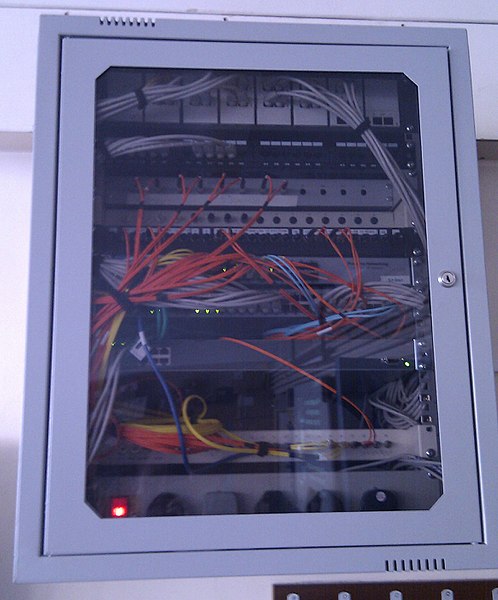Polarization-maintaining optical fiber
In fiber optics, polarization-maintaining optical fiber is a single-mode optical fiber in which linearly polarized light, if properly launched into the fiber, maintains a linear polarization during propagation, exiting the fiber in a specific linear polarization state; there is little or no cross-coupling of optical power between the two polarization modes. Such fiber is used in special applications where preserving polarization is essential.
Image of the cross section of a polarization-maintaining optical fiber patch cord, taken with an illuminated microscopic viewer called a fiberscope. The two small, eye-like circles are the stress rods and the tiny circle between them is the core. The larger circle surrounding them is the cladding, usually 125 microns in diameter.
An optical fiber, or optical fibre, is a flexible glass or plastic fiber that can transmit light from one end to the other. Such fibers find wide usage in fiber-optic communications, where they permit transmission over longer distances and at higher bandwidths than electrical cables. Fibers are used instead of metal wires because signals travel along them with less loss and are immune to electromagnetic interference. Fibers are also used for illumination and imaging, and are often wrapped in bundles so they may be used to carry light into, or images out of confined spaces, as in the case of a fiberscope. Specially designed fibers are also used for a variety of other applications, such as fiber optic sensors and fiber lasers.
A bundle of optical fibers
A TOSLINK fiber optic audio cable with red light shone in one end
Colladon's "light fountain"
A wall-mount cabinet containing optical fiber cables. The yellow cables are single mode fibers; the orange and aqua cables are multi-mode fibers.





